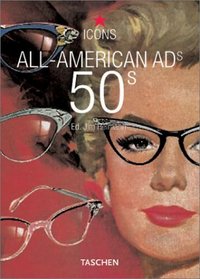Search -
All-american Ads 50s (Icons Series)
Allamerican Ads 50s - Icons Series
Author:
TRAVEL BACK TO THE GOLDEN AGE OF MID-CENTURY ADVERTISING IN AMERICA Discover America through this incredible collection of ads from the 1940s and 50s. Packaged foods, cars, travel, technology, liquor, cigarettes, movies, appliances, furniture, toothpaste; products and services the American consumer needed, even if they sometimes didn’t kn... more »
Author:
TRAVEL BACK TO THE GOLDEN AGE OF MID-CENTURY ADVERTISING IN AMERICA Discover America through this incredible collection of ads from the 1940s and 50s. Packaged foods, cars, travel, technology, liquor, cigarettes, movies, appliances, furniture, toothpaste; products and services the American consumer needed, even if they sometimes didn’t kn... more »
ISBN-13: 9783822824054
ISBN-10: 3822824054
Publication Date: 3/31/2003
Pages: 192
Rating: 1
ISBN-10: 3822824054
Publication Date: 3/31/2003
Pages: 192
Rating: 1
5 stars, based on 1 rating
Genres:
- Arts & Photography >> Graphic Design >> Commercial >> Advertising
- Arts & Photography >> Graphic Design >> Commercial >> General
- Arts & Photography >> History & Criticism >> General
- Business & Money >> Marketing & Sales >> Advertising
- History >> Americas >> United States >> 20th Century >> 1950s




